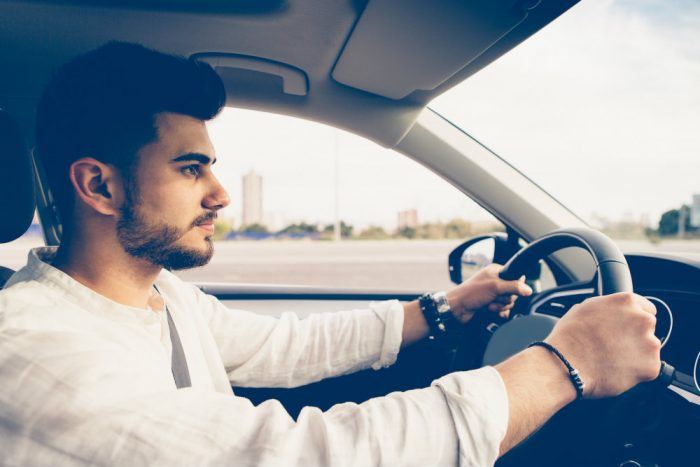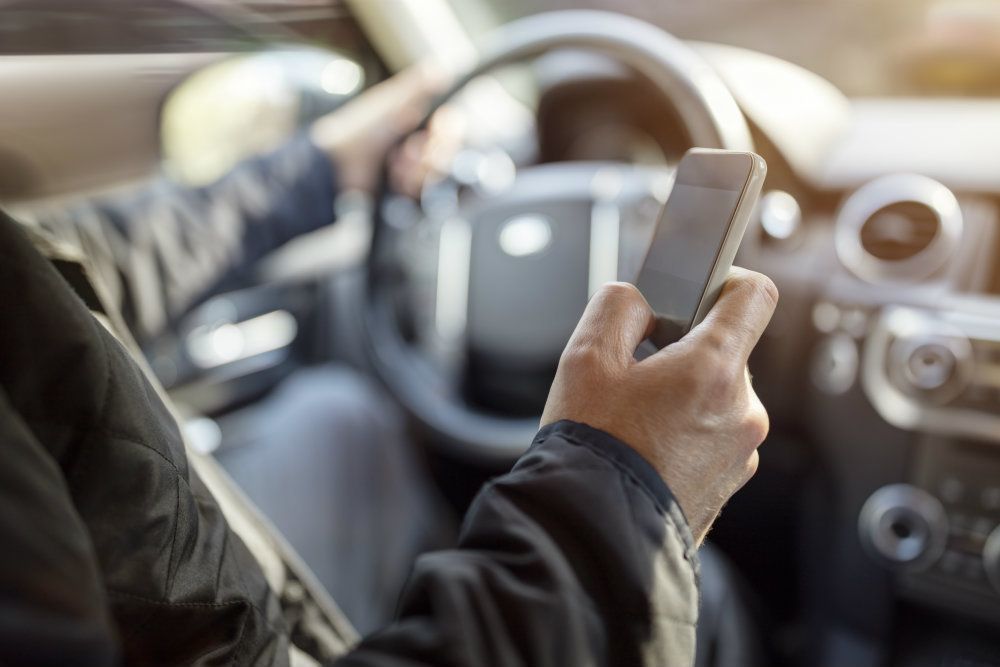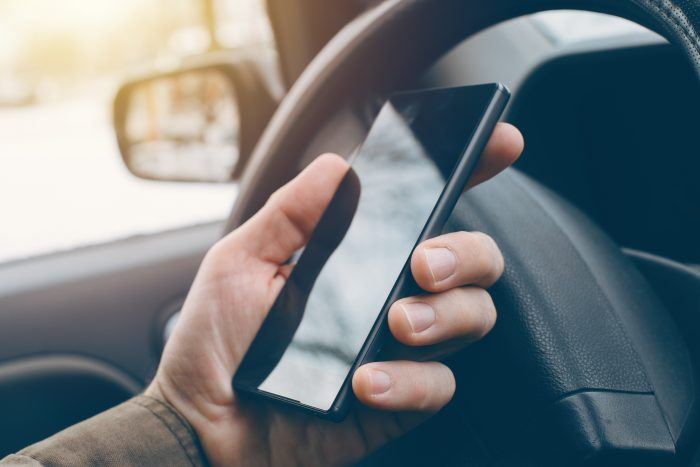The data is conclusive. Distracted driving is dangerous and can increase your chances of getting involved in a potentially debilitating or life-threatening vehicle crash. According to the National Highway Traffic Safety Administration, distracted driving accounted for 3,450 deaths in 2016. Distracted driving can also be blamed for the 391,000 reported injuries in vehicle crashes in that same period.
Sobering Statistics
Think about that for a second. If you break it down, we’re talking nine people killed and 1,000 injured in vehicle crashes each day in the United States alone, all caused by texting, calling, or browsing the Internet while driving.
Distracted driving is a worldwide problem. Are you aware that one in four Australians have a nasty habit of multitasking while driving? A survey conducted by Carzoos found that 75 percent of Australians like to eat while operating a vehicle and 55 percent use a mobile phone while driving. The study even concluded that 25 percent of women aged 25 to 34 apply makeup while driving. Talk about severe distractions!
The European Transport Safety Council reported last year on surveys conducted by Ipsos and Dekra. Ipsos found that 36 percent of drivers in the Czech Republic admitted to using their phone behind the wheel; Dekra found around 25 percent in Spain and Ireland said the same thing. And in a bizarre yet tragic case two years ago in Japan, the popular Pokémon Go game was a factor in a fatal accident.
What Is Distracted Driving
Distracted driving or driver inattention is driving while doing something else. Does talking to a passenger constitute distracted driving? Not exactly, as long as you’re not discussing the theory of relativity while behind the wheel. You can talk without taking your eyes off the road, but using a smartphone or fiddling with the audio and navigation system is a different story altogether.
In order to comprehend the meaning behind the numbers, we were fortunate enough to chat with Special First Lieutenant and Traffic Safety Specialist Jim Flegel of the Michigan State Police.
“Distracted driving is a major concern in Michigan. There were 20,000 reported crashes in 2017 which led to 72 deaths and 7,652 injuries,” he said. “The sad part is that 100 percent of crashes related to distracted driving are preventable.”
Phone use while driving is a fundamental problem.
“In today’s electronic digital age, it seems impossible for some people to resist answering phone calls or responding to text messages or Snapchat, Instagram, Twitter, or Facebook posts even while behind the wheel,” Flegel added.
What Are The Causes of Distracted Driving
Distracted driving is any activity that could divert the driver’s attention, but why do people find it hard to resist doing something else that could put their own lives or someone else’s in jeopardy?
“Using a cellphone or smartphone stimulates the portion of a person’s brain that releases a chemical called dopamine,” Flegel commented. “This chemical triggers a pleasure response in the brain that makes a person happy.”
Some experts even argue we are modern day versions of Pavlov’s dog with regard to smartphones.
“This is one of the reasons why it makes it difficult to resist the urge to respond immediately to text messages, calls, or social media posts, regardless if the person is operating a vehicle or not,” Flegel added. “When a person drives distracted one time and nothing bad happens, they think they can do it all the time with the same results. This is not true! It only takes being distracted for a brief moment before a tragedy can occur.”

What Are The Types of Distractions
Distracted driving comes in three different forms:
- Visual – taking your eyes of the road.
- Manual – taking your hands of the wheel; and
- Cognitive – taking your mind off the task of driving.
“Texting while driving is especially dangerous since it combines all three forms of distractions,” Flegel stated.
Sending or reading text messages (or social media posts) will take your eyes off the road for about 5 seconds. This is long enough to cover the length of an entire football field while traveling at 55 mph. When you add it up, it is easy to discern why distracted driving is hazardous but preventable. It only takes a second of hesitation and good judgement to completely change the outcome of what could be an unfortunate event.
Examples of distracted driving include:
- Texting
- Reading
- Eating or drinking
- Watching videos or movies
- Using a smartphone or cellular phone
- Grooming (combing hair or applying makeup)
- Excessively adjusting the navigation, climate, and infotainment systems
- Reaching down to pick something up or grabbing your bag from the backseat
Distracted Driving – Who Is Most At Risk
According to the Traffic Safety Facts Research Note on Distracted Driving conducted by NHTSA, drivers under the age of 20 had the highest proportion of distraction-related fatal crashes in 2015.
It is reported that 42 percent of high school students who drove in the past 30 days sent text messages or emails while driving. What makes it more worrying is how these students were less likely to wear a seatbelt, more likely to ride with a driver who had been drinking, or more likely to drink and drive themselves, which further increases the chances of a horrific crash.
But teens and millennials are not the only ones at risk. We are all at risk the very moment we enter the car and drive. In fact, we are all guilty of committing a grave sin by allowing ourselves to be distracted by smartphones, mobile devices, passengers, and other external factors in the car.
Prevention Is The Best Cure For Distracted Driving
Luckily for us, local governments are doing their best to prevent drivers from succumbing to the dangers of distracted driving. Many states are now enacting laws such as banning texting while driving or using graduated licensing systems for teen driver applicants. Texting while driving is now prohibited in 46 states and the District of Columbia as of June 2017.
“There have been many initiatives where Michigan State Troopers will use unmarked vehicles to spot drivers texting on their phones while driving,” Flegel warned. “Once the troopers witness a person texting while driving, they will radio ahead to a trooper in a fully marked patrol car which will pull the vehicle over.”
In Michigan, there are laws that prohibit drivers from texting or reading texts while operating a vehicle. The law covers failing to maintain the lane of travel which leads to reckless or careless driving. Violators will be fined $100 for the first offense and $200 for subsequent violations.
While technology is sometimes proposed as a solution, law enforcement officials are hesitant to endorse the idea.
“Distracted driving can somewhat be related to impaired driving,” Flegel noted. “It can be construed as ‘digitally impaired’ so make a pledge to never text, type or access apps while driving.”
Distracted Driving Is Our Responsibility
It starts by setting an example for kids and younger adults who are old enough to get behind the wheel. It is best to avoid texting, watching videos, browsing the Internet, reading, and playing video games while operating a motor vehicle. It is also best to avoid smoking and eating and drinking while driving.
“It is time for us to be better role models. Remember your children are watching and will be influenced by your driving decisions when they begin driving,” Flegel said. “The Michigan State Police urge all drivers to make the responsible decision: put your phone away and focus all your attention on driving.”
If you need to do anything remotely distracting while driving, it is best to pull over and stop so you can better focus on the task at hand. The message is clear: anything that distracts you visually, manually, or cognitively while driving should be avoided at all costs.
Alvin Reyes is the Associate Editor of Automoblog. He studied civil aviation, aeronautics, and accountancy in his younger years and is still very much smitten to his former Lancer GSR and Galant SS. He also likes fried chicken, music, and herbal medicine.




